Resources by Carmichael Crutchfield
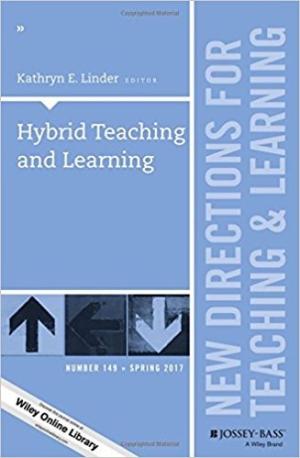
Hybrid Teaching and Learning defines and explains the hybrid approach to teaching and learning by providing answers to questions surrounding this phenomenon. This method of teaching and learning is often referred to as blended pedagogy. Answers to questions and conclusions are arrived at through eleven chapters that together give a strong and comprehensive explanation of hybrid teaching and learning. The authors of the chapters are Kathryn E. Linder, Patsy D. Moskal, Linda S. Bruenjes, Sarah A. Smith, Traci Stromie, Josie G. Baudier, Jason Snart, Faye Haggar, Bruce Kelley, Weichao Chen, Daniel Newman, Michael Dickinson, and Kirsten Behling. Kathryn E. Linder defines hybrid teaching as a pedagogy that utilizes technology to create a variety of learning environments for students (11). This method of teaching and learning reduces the amount of face-to-face encounters between teacher and learner. However, technologically facilitated activities outside of the actual classroom often make the face-to-face meetings more active and meaningful. The teacher of hybrid courses must be intentional in setting up these activities. Each chapter describes its objective clearly and explains it very well for the reader. The pedagogy of hybrid teaching and learning has components similar to other successful pedagogies, including learning outcomes and objectives. A best practice in hybrid pedagogy is to start at the end and work backwards in planning courses. One should know what the desired final outcome is before planning activities. This type of teaching and learning involving backward design requires planning the entire course and may be difficult for teachers who are accustomed to planning classes weekly. This book works well as a framework for understanding hybrid teaching and learning. It is very timely for institutions considering a variety of methods for instruction. The authors suggest ways of keeping the values that come with face-to-face teaching and learning while taking advantage of the many new technologies that enhance teaching and learning. I found chapter 9 to be of particular interest because the author makes a strong argument to teachers about accessibility. Teachers of hybrid courses must ensure that all students can access courses in face-to-face spaces as well as technological spaces. The only weakness that I can identify in this book is that perhaps it could have given more information or insight about the pros and cons of hybrid teaching and learning. This might help others avoid some pitfalls. Overall, I found this book to be a valuable asset. As one who uses hybrid pedagogy I think this book is a helpful tool for all teachers who prepare and plan to teach in this format. Individual chapters or the entire book will help others learn more about hybrid teaching and learning.
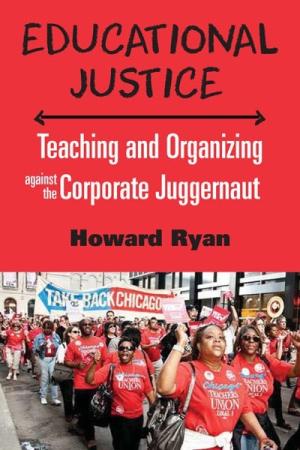
Educational Justice: Teaching and Organizing against the Corporate Juggernaut addresses what the authors call the corporate assault on public education. The book provides detailed stories concentrated in the Chicago and Los Angeles public systems that outline struggles and successes in regard to public schools. This collaborative book was written by Howard Ryan with Debra Goodman, Joel Jordan, and Joseph Zecola. Ryan describes school reform as corporate: “a package of public policies, private investments, and informal processes through which corporate and private actors are seizing control of education”(23). Ryan names teacher unions that partner with billionaires as part of the corporate juggernaut that places control of education in the hands of those who do not promote the best intentions of public education and leads to privatization of the school system. Ryan provides an elaborate and involved example of organization and resistance to privatization by Kelvyn Park High School in Chicago. He details the movements by parents, children, and teachers that lead to victory in keeping this one school from being privatized. Joel Jordan describes in detail how teacher unions fought back against the corporate movement and frames a strategic approach to the fight against school reform. In addition to providing an outline and methods for organizing to fight corporate school reform, the authors demonstrate school transformation through organization. Debora Goodman focuses on critical literacy, democratic schools, and the whole language movement. Goodman draws upon insights from progressive education, particularly whole language instruction, and progressive educators like John Dewey, Lev Vygotsky, and Paulo Freire to build a theoretical framework. She contrasts theories of literacy and teaching to further develop her thesis. Ryan provides a transformational organizational method as he describes the practices of Soto Street Elementary School in Los Angeles. He argues against scripted reading programs and supports solidarity among teachers – accomplished through family writing workshops, advocacy for literacy, and the addition of books available to students. Using the same rationale and promotion of transformation of reading, Ryan and Zecola present ideas on a curriculum model using Crenshaw High School in Los Angeles. It is promoted through an extended learning cultural model, extended learning time for teachers, collaborative units of study, and collaborative mapping and history. Additionally, they outline the need for extending learning into the community through internships and learning opportunities for parents. This book and the work of the authors might be difficult for those in public education outside of larger urban areas to relate to. The book addresses a critical issue facing public education but is limited by only looking at schools in urban settings. The book is valuable because it addresses public schools and social justice in a way that is challenging. The authors raise consciousness about how easy it is to take money from corporate sponsors and then be lured into an educational system dictated by those whose knowledge of how education actually takes place is limited.
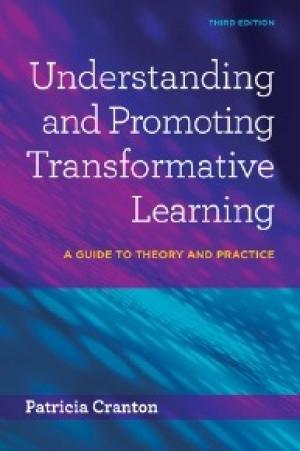
In the third edition of Understanding and Promoting Transformative Learning, Patricia Cranton provides new insights into the field of transformative learning. Cranton promotes transformative learning, addresses transformative learning theory, and offers strategies for the concept itself. The author examines and promotes transformative learning in multiple contexts: higher education, business industry, government, health professions, nonprofit organizations, and community development. Cranton traces the origin of the concept of transformative learning and then gives a full description of the theory from an integrative perspective. In doing so, she shows the reader that transformative learning takes place both individually and communally. A minor weakness of the book is its use of specialized psychological terminology; the reader unfamiliar with it may lose focus on the overall purpose of the book as they strive to understand the meaning of particular words and phrases. That said, the book is helpful for understanding transformative learning theory, practice, and strategy. These insights alone aid faculty in developing effective teaching strategies to advance student learning. In addition, the author shows not only the importance of the subject, but how it can be used in real life applications. This book is valuable because it focuses on the core of what it means to learn. At the forefront of this learning is an acknowledgement of various ways of knowing and the author provides examples of these. I was particularly drawn to the section that discusses dialogue, discourse, and support. This section of the book resonates with me because it fits into my own theory of critical pedagogy. The student should be impacted by learning in such a way that it transforms not only the learner, but the learner’s society as well. Understanding and Promoting Transformative Learning is particularly valuable for helping educators see their role in the learning process. The methodology described throughout the book leads to self-reflection, critical reflection, and thinking about how one’s teaching may fit into contemporary contexts. Furthermore, it converts the process of reflection into active participation in society. Additionally, the book discusses empowerment and the importance of dialogue to this process. This book is valuable in its demonstration of how dialogue is critical to transformative learning and can help the reader see how this affects student self-awareness and consciousness. Overall, I found this book to be a valuable asset for those interested in social justice and especially for teachers interested in transformative learning.
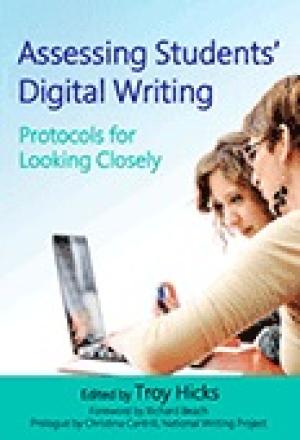
Assessing Students’ Digital Writing: Protocols for Looking Closely collaboratively addresses teachers who want to know about how to give feedback on digital writing. The book provides six digital writing protocols used to give feedback to teachers about student learning. The authors of the protocols are teachers themselves; Erin Klein, Julie Johnson, Jeremy Hyler, Bonnie Kaplan, Jack Zangerie, Christina Puntel and Stephanie West-Puckett wrote this book as a part of the National Writing Project in Berkley, California. Each teacher in this project uses a digital format to teach a specific lesson. At the end of each chapter the teacher discusses the implications of the digital process for instruction and assessment. At the end of the book the editor discusses broad themes and issues about curriculum, instruction, and assessment. This discussion is based on the study of student work in the writing as shared through conversations among the various authors and teachers of the project. As stated earlier, this book is a collaborative work and evidence of this is seen throughout each chapter. A weakness of the book is that it may be difficult for those who are just entering into digital writing because of the use of many technical terms associated with web-based learning. Although in general I find this book very valuable for gaining a better understanding about digital learning, I would like to see more information about the students who were part of the writing. The book is intriguing because of its focus on youth and their learning through digital writing methods. It is also timely in that it gives rise to more conversation about the remnants of the No Child Left Behind era and the very present views on Common Core State Standards that are sweeping across K-12 public education in the United States. Additionally, the rise of many digital formats for classroom teaching gives one reason to take the book seriously. As the author points out, this conversation is even more in vogue because of the accessibility of teachers and students to web-based services such as Google Docs, Wikispaces, and Voicethread. All of these services can be accessed on digital devices that are mobile. I can personally relate to what the authors are saying because I am presently teaching in an online platform that pushes me to look at digital writing very seriously. Furthermore, the book is interesting because the voices of the teachers in conversation about student learning are present throughout the book. I find this to be important in a time when much effort is made to assess student achievement where it seems student learning is not at the core of the assessment concern, although on the surface it may seem to be. Overall, this book is a valuable asset especially for those interested in assessment and digital writing.
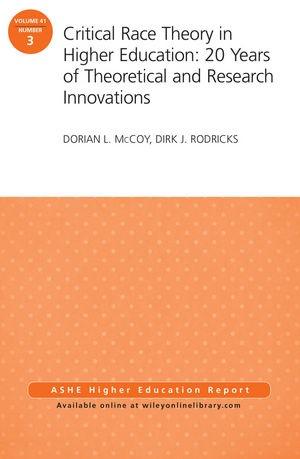
Critical Race Theory in Higher Education: 20 Years of Theoretical and Research Innovations is an in-depth description and analysis of critical race theory. The book addresses contemporary issues facing our society in general and higher education specifically. Dorian L. McCoy, a professor at the University of Tennessee and Dirk. J. Rodricks, a doctoral student at the University of Toronto collaborated on the book. It is part of the Higher Education Report periodical series. It is interesting that this book was launched during some disturbing times involving race in the United States. The book addresses critical race theory at the time when the slogan “Black Lives Matter” becomes the rallying cry against injustice and the attacks on black lives by the criminal justice system and police specifically. Although the book addresses this issue, it is not what propelled the authors to write it. The authors define critical race theory (CRT) as: "A form of oppositional scholarship that centers race and racism while challenging the Eurocentric values established as the accepted norm in the United States; is used to examine the unequal and unjust distribution of power and resources politically, economically, racially, and socially; a movement of scholars committed to challenging and disrupting racism and other forms of oppression; composed of the following key tenets: the permanence of racism, experiential knowledge, interest convergence theory, intersectionality, whiteness of property, the critique of liberalism, and commitment to social justice." (91) Throughout the book the authors take their definition of critical race theory and present research on each aspect of it. This not only serves to educate students in higher education, but also to enlighten those who are part of the hiring process. As one who has served on search committees at institutions of higher education, I find the research in this book to be very stimulating. The documented disproportionate number of professors of color teaching in institutions of higher education makes this research very helpful for search committees in these institutions. Astute people will use this information to further promote equality and even the playing ground in institutions of higher education. Critical Race Theory in Higher Education serves as an educational tool for administrators, board of trustee members, and faculty in higher education, especially for the ways by which it encourages deeper reflection on the subject. The weakness from this reviewer’s viewpoint is that the book becomes somewhat overwhelming with so many references. This sometimes causes the flow of reading to be cumbersome particularly when reading some technical terms. That said, McCoy and Rodricks have put together a large corpus of research on critical race theory that could be helpful to faculty teaching in North American contexts. The book is very timely as it explores a very important subject to address in our present time of heightened awareness of multiculturalism and pluralism. Overall this book is a valuable resource for all who have an interest in higher education.